#pseudo medieval art
Explore tagged Tumblr posts
Text

Guinevere and Iseult: Cartoon for Stained Glass, William Morris. 1862.
#art#aesthetic#art history#historical fashion#historical art#women in art#victorian#women#pseudo medieval art#medieval art#1860s art#medieval aesthetic#guinevere#iseult#Isolde#arthurian legend#medieval fashion#1860s#william morris#stained glass#tristan and iseult#Arthur and Guinevere#king arthur#medieval legend#french medieval#welsh medieval#Irish medieval#engraving#cartoon#fashion
3K notes
·
View notes
Note
auri is hot
correct 😌 you've unlocked this stupid cheesecake drawing i was going to keep to myself

#auri de riva#lucanis dellamorte#spite#datv#dragon age#my ocs#my art#asks#(thank you i love to hear it 😊💕💕)#it's kind of weird for some reason to think about people in pseudo-medieval fantasy settings exercising but auri would. they would.#in a modern setting they would be such a gym bro#they would unironically wear shirts that say shit like#'pain is just weakness leaving the body' or 'to double your gains you have to triple your effort'
481 notes
·
View notes
Text
Instead of butterflies as a symbol of fleeting innocence or something positive and nice that is short lived in some hobbesianesque worldview Butterflies as symbol of endurance of goodness and collective good works because it matters not how short the individual life as whole they continue on as delicate as they are they're never wiped out completely
#this is for a pseudo medieval setting btw#not a modern irl life one because pesticides and monoculture#what is lawn culture if not another example of monoculture#inspired by Brienne art I didn't want to put sappy things in the notes on
4 notes
·
View notes
Text
Reposting my works here, day 1
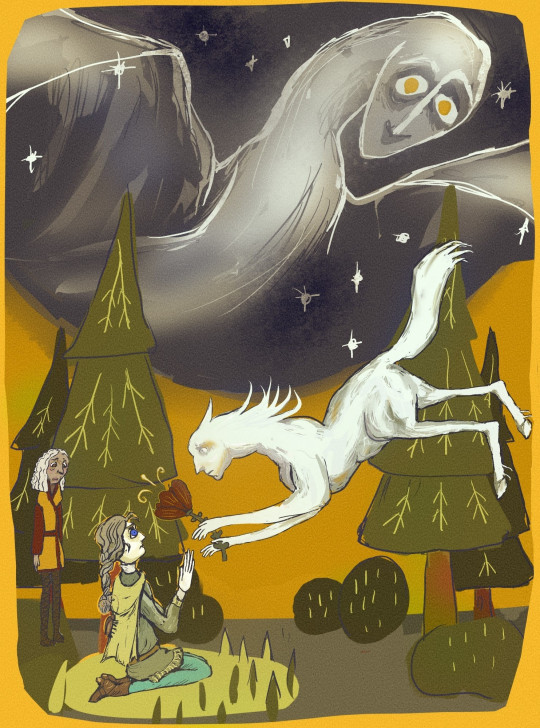
Once, there was a man without a soul.
They saved someone, who later became their friend. The friend convinced them to ask god for the soul. The god sent an angel to give them it, in a form of a red flower.
The soul caused them much pain and anger.
After that, they began to bring pain and suffering around them, starting with their friend, who barely could get away. Later, they were tried for their crimes, maimed and turned into a monster, cursing all their descendants to come.
In the trial, they begged for the god to take the soul back, but the angel who gave them the soul insisted that it stays so that it can be saved, for suffering is a virtue.
Their friend decided to make things right and help them, by performing a ritual to reverse the curse. They became extremely beautiful, but still weaker than human, and still very distinct. And the soul was gone. So were they - they disappeared. But later their offsprings started showing.
It is believed that the man without a soul was the First Elf.
It has some truth to it in-universe: the First Elf is a real person in the universe of this story. Nobody remembers her how she was, though, and the truth is covered by layers of myths.
This legend is a part of lore of one of my comics.
This one is, unfortunately, on a hiatus after just a few pages-frames.
#original comic#original character#fantasy lore#fantasy comics#fantasy mythology#original characters#webcomic#medieval art#pseudo medieval#glass dragon jesus#medieval aesthetic
2 notes
·
View notes
Text
did people work less in the past? was it less stressful to live in an earlier era? these questions might be more productively addressed if everyone asking them were interested in the answers on their own terms, instead of reaching for a historical narrative to lend authority to their current political claims
#unfortunately history is a rhetorical art#real pseudo-somebody shit! as always!#like i am sympathetic to the impulse & i care a great deal about what truth we have about the lives of the long dead#but i don't think one's UBI argument is bolstered one way or the other by the number of holidays enjoyed by medieval peasants etc#i make this post like twice a year probably sorry#history may be relevant but there's no obvious reason that it should be decisive or even especially morally authoritative
5 notes
·
View notes
Text
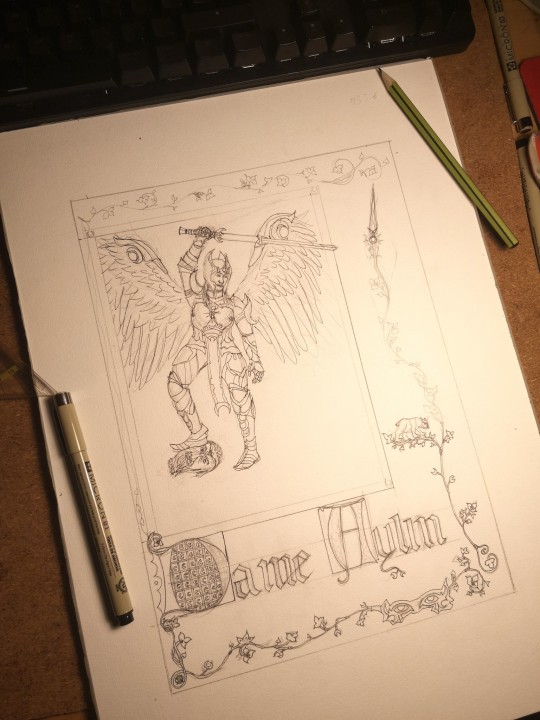
the Baldur's Gate brain rot worm is real, there's ✨illuminated✨ fanart happening and everything
#listen i know the anatomy is wrong but i was at a point where i couldn't really fix it anymore#and also i feel like you can get away with this in pseudo medieval art#please note the owlbear
2 notes
·
View notes
Text
I also believe that in a "tech level" approach, though of course I dislike that term, trying to get blood out of the stone of pseudo-medieval settings just constrains you. There are plenty of very, very well researched guides to medieval life and technology, mostly about Europe but you will find them about the Islamic world, Eastern Asia, and so on...
but the thing is, even with well researched settings, even with very welcome switches to other historical inspirations, it's just done and tired. We are talking about fantasy, a genre that can encompass the entirety of human imagination, and people always go back to the same time period of 476-1453 like stuck in a time loop, it's maddening.
There is a lot to talk about this but let's focus on tech for a little. Do you know how ingenious bronze age technology was? Did you read about pre-columbian cities and engineering? What about something beyond the Middle Ages, the inventions of the Renaissance or Early Modernity? I think there has been quite a lot on fantasy with industrial technology but it often feels (especially in things like popular RPGs) that it's a couple of steampunk things stacked upon a medieval-inspired world. How about a world that just skips the medieval aesthetics and goes to an industrial revolution?
And since this is fantasy, you can mix and match technology and inventions. What's more, you can explore art styles and philosophies, that's more complex to reflect but very well worth it. There is simply no need to return again and again to the tired aesthetics, true, but you can also learn how technology shaped history and do something more creative about it that researching just the same time period over and over and over.
I think we're just done with castles and plate armor.
#cosas mias#biotipo worldbuilds#worldbuilding#fantasy#it's like when in my infamous potato posts I talk about coffee and such commodities in science fiction#but all the replies are about potatoes in medieval fantasy#don't you want to imagine how coffee production and trade works? be warned: it implies things outside medieval europe! scary!!!!!
223 notes
·
View notes
Text
Today marks the premier of #Pathfinder’s Triumph of the Tusk Adventure Path, so I’d like to take a moment to discuss a relevant topic near and dear to my heart.

ORCS!
While Tolkien was drawing on some linguistic antecedents, Orcs in fantasy originate from The Hobbit & Lord of the Rings, where they’re brutish soldiers of various forces of evil.

Initially lacking redeeming quality, Orcs have become a darling of pop culture, their thuggish nature explored from many angles across TTRPGs, video games, comics, novels, and more.
Now, when you picture an Orc, you no doubt imagine something akin to the Warcraft or Warhammer franchises: statuesque, green skinned humanoids with protruding underbites and looming tusks, often locked into a primitive, itinerant lifestyle, eschewing technology beyond what they pillage from other races.

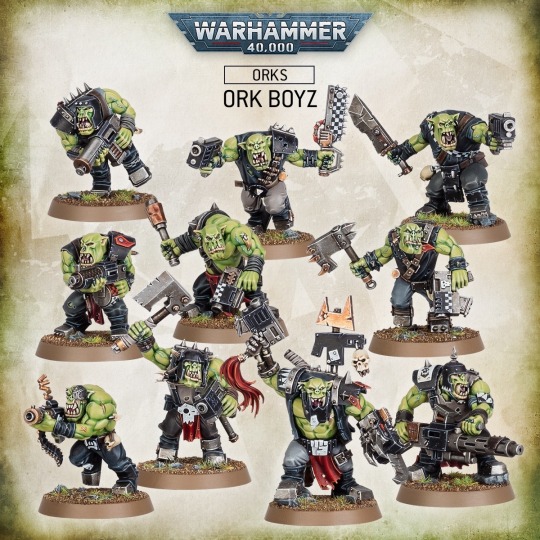
Interestingly, none of this is in Tolkien.
In Tolkien, “Orc” was essentially another word for “Goblin,” or perhaps unusually large Goblins. Far from statuesque, Gollum (a (former?) Hobbit) could easily be confused for one. The Uruk-hai, a new, stronger Orcish offshoot were described as Orcish in appearance but only as tall as a Man, not taller.
Tolkien’s Orcs are described as deformed, but nothing as specific as green skin or tusks is specifically mentioned (Tolkien saved in-depth sensory detail for trees, and occasionally beards).
Far from being savages, Tolkien’s Orcs were–in his grand Romanticist narrative–stand-ins for industrialization. They were destroying the forests to build grand weapons of war, and soot-covered Mordor evoked the smokestacks of 19th century london.
In many ways the conflict of LotR can be interpreted as Tolkien pitting the noble myths and tales he studied up against his real experiences in WWI.
(the thought amuses me of a firmly medieval fantasy setting, except when we zoom in on the Orcish Badlands they’re all shelling each other from the trenches)
But while none of these traits are in Tolkien, there is a source where they are central.

The Green Martians, or Tharks, first appeared in A Princess of Mars by Edgar Rice Burroughs, published in All-Story Magazine from Feb-July 1912, well before any of the kids Tolkien decided to tell a fairy tale to were born.
The Tharks are described as 15 foot tall nomadic savages, favoring mighty beasts and weapons salvaged from the more civilized races of Barsoom. They have green skin and tusks, as well as six limbs (interestingly, the middle limbs are described as functional as either crude arms or secondary legs, but art always just depicts four arms)

Culturally, the Tharks are clearly meant as extensions of the Apache raiders encountered in the early chapters of the book set in Arizona; i.e. some California ranch-owner’s idea of wasteland savages. Nomadic, inhuman raiders redeemable only when breaching their primitive traditions.
The parallels are almost uncanny, and I’ll admit I’m honestly not sure where the crossover occurs. Early editions of D&D–another driver of fantasy trends–depict orcs as pig-people, which is probably how tusks became so iconic. They later added gray skin, which persisted officially until the current edition.
Somewhere between there in ‘74 and Warhammer in the early 80s is when the pseudo-Barsoom look took over in broader culture, and at this point there’s no getting around it. Even the more recent Tolkien film adaptations can’t entirely escape the expectation of modern Orcishness.

Turning back the clock a bit, Tolkien notably was never entirely sure where Orcs came from. His first idea was that they were molded from clay by Morgoth, a dark mirror to Adam, but being a Catholic at heart, he disliked the idea of Evil being a creative force.
He flip-flopped for the rest of his life, whether Orcs were corrupted men/elves/hobbits, uplifted beasts, even (according to one post I saw) soulless bodies remotely piloted by demons. He could never quite square the need for unfailingly evil mooks with his own feelings on Good & Evil.
Personally, I find particular resonance in the parallel between what D&D used to call an “always chaotic evil” race and the very Catholic concept of Original Sin. Was Tolkien merely dancing around the idea that the Orcs only needed to be Saved?
I can’t say what Tolkien would think of modern Orcs, either their merging with an earlier, American space alien, or our attempts to humanize what was supposed to be fundamentally inhuman. But I think his insecurity speaks to the same source as our fascination.
Who among us hasn’t struggled with what it means to be good? Or to be evil? And if we are made to be evil, what does it mean to strive against that purpose or to surrender to it? Can we abandon the precepts of predestiny? Or do we reject that they were ever there?
Stare deeply into that Jungian shadow and tell me…
Is it green? And do you want it to be?

#orcs#orc#j r r tolkien#tolkien#pathfinder#pathfinder 2e#triumph of the tusk#adventure path#the hobbit#the lord of the rings#lord of the rings#world of warcraft#Warcraft#Warhammer#warhammer 40k#warhammer fantasy#orks#edgar rice burroughs#a princess of mars#barsoom#green martians#tharks
109 notes
·
View notes
Text
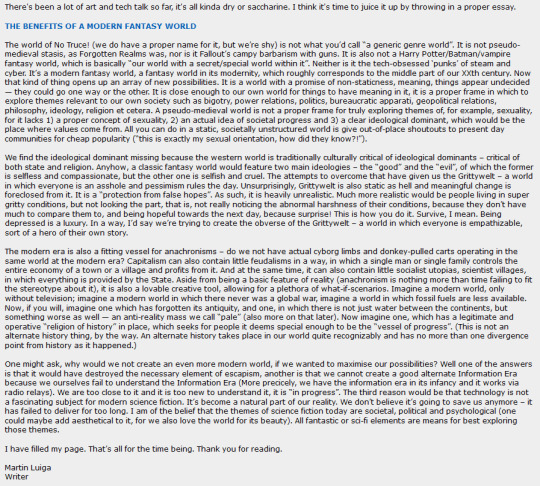
post on one of the dev forums for disco elysium, titled "THE BENEFITS OF A MODERN FANTASY WORLD". text version beneath the cut
There's been a lot of art and tech talk so far, it's all kinda dry or saccharine. I think it's time to juice it up by throwing in a proper essay.
THE BENEFITS OF A MODERN FANTASY WORLD
The world of No Truce! (we do have a proper name for it, but we’re shy) is not what you’d call “a generic genre world”. It is not pseudo-medieval stasis, as Forgotten Realms was, nor is it Fallout’s campy barbarism with guns. It is also not a Harry Potter/Batman/vampire fantasy world, which is basically “our world with a secret/special world within it”. Neither is it the tech-obsessed ‘punks’ of steam and cyber. It’s a modern fantasy world, a fantasy world in its modernity, which roughly corresponds to the middle part of our XXth century. Now that kind of thing opens up an array of new possibilities. It is a world with a promise of non-staticness, meaning, things appear undecided — they could go one way or the other. It is close enough to our own world for things to have meaning in it, it is a proper frame in which to explore themes relevant to our own society such as bigotry, power relations, politics, bureaucratic apparati, geopolitical relations, philosophy, ideology, religion et cetera. A pseudo-medieval world is not a proper frame for truly exploring themes of, for example, sexuality, for it lacks 1) a proper concept of sexuality, 2) an actual idea of societal progress and 3) a clear ideological dominant, which would be the place where values come from. All you can do in a static, societally unstructured world is give out-of-place shoutouts to present day communities for cheap popularity (“this is exactly my sexual orientation, how did they know?!”).
We find the ideological dominant missing because the western world is traditionally culturally critical of ideological dominants – critical of both state and religion. Anyhow, a classic fantasy world would feature two main ideologies – the “good” and the “evil”, of which the former is selfless and compassionate, but the other one is selfish and cruel. The attempts to overcome that have given us the Grittywelt – a world in which everyone is an asshole and pessimism rules the day. Unsurprisingly, Grittywelt is also static as hell and meaningful change is foreclosed from it. It is a “protection from false hopes”. As such, it is heavily unrealistic. Much more realistic would be people living in super gritty conditions, but not looking the part, that is, not really noticing the abnormal harshness of their conditions, because they don’t have much to compare them to, and being hopeful towards the next day, because surprise! This is how you do it. Survive, I mean. Being depressed is a luxury. In a way, I’d say we’re trying to create the obverse of the Grittywelt – a world in which everyone is empathizable, sort of a hero of their own story.
The modern era is also a fitting vessel for anachronisms – do we not have actual cyborg limbs and donkey-pulled carts operating in the same world at the modern era? Capitalism can also contain little feudalisms in a way, in which a single man or single family controls the entire economy of a town or a village and profits from it. And at the same time, it can also contain little socialist utopias, scientist villages, in which everything is provided by the State. Aside from being a basic feature of reality (anachronism is nothing more than time failing to fit the stereotype about it), it is also a lovable creative tool, allowing for a plethora of what-if-scenarios. Imagine a modern world, only without television; imagine a modern world in which there never was a global war, imagine a world in which fossil fuels are less available. Now, if you will, imagine one which has forgotten its antiquity, and one, in which there is not just water between the continents, but something worse as well — an anti-reality mass we call “pale” (also more on that later). Now imagine one, which has a legitimate and operative “religion of history” in place, which seeks for people it deems special enough to be the “vessel of progress”. (This is not an alternate history thing, by the way. An alternate history takes place in our world quite recognizably and has no more than one divergence point from history as it happened.)
One might ask, why would we not create an even more modern world, if we wanted to maximise our possibilities? Well one of the answers is that it would have destroyed the necessary element of escapism, another is that we cannot create a good alternate Information Era because we ourselves fail to understand the Information Era (More precicely, we have the information era in its infancy and it works via radio relays). We are too close to it and it is too new to understand it, it is “in progress”. The third reason would be that technology is not a fascinating subject for modern science fiction. It’s become a natural part of our reality. We don’t believe it’s going to save us anymore – it has failed to deliver for too long. I am of the belief that the themes of science fiction today are societal, political and psychological (one could maybe add aesthetical to it, for we also love the world for its beauty). All fantastic or sci-fi elements are means for best exploring those themes.
I have filled my page. That’s all for the time being. Thank you for reading.
Martin Luiga Writer
#posts#disco elysium#martin luiga#im looking for a specific thing from the devblogs so yall can get some highlights
471 notes
·
View notes
Text

Ophelia, Alexandre Cabanel. 1883.
#art#aesthetic#ophelia#hamlet#hamlet art#art history#historical art#Victorian art#1880s art#Ophelia art#hamlet aesthetic#Victorian hamlet#1880s#gilded age#gilded age art#I’m so used to the Millais painting so this is a nice fresh alternative#shakespeare#Shakespeare art#Shakespearean art#pseudo medieval art#neo medieval art?#not sure what to call imitation medieval art lol#women in art#medieval art
39 notes
·
View notes
Text

The Mirror of Venus
Artist: Edward Burne-Jones (English, 1833–1898)
Date: 1898-1875
Medium: Oil on canvas
Collection: Calouste Gulbenkian Museum, Lisbon, Portugal
Description
A member of the pre-Raphaelite movement that was formed in England in 1848, Sir Edward Burne-Jones became one of the leading figures in a new trend, known as Aestheticism, that emerged in the 1860s. This composition can be seen as an exaltation of ideal beauty, bringing the atmosphere of the painting into alignment with a perspective shared by late Victorian art.
The painter employs minimum of narrative elements, creating a linear arrangement of poetic and oneiric figures clad in pseudo-classical clothing in the manner of a Greek-inspired frieze. Rather than aiming for a formal stylistic resemblance, Burne-Jones seeks to create a general affinity with a Renaissance atmosphere. In a manner clearly suggestive of the Quattrocento, and Botticelli in particular, the work gives precedence to the decorative harmony of the whole and deliberately evokes a sense of nostalgia for the past.
Like The Bath of Venus, which also belongs to the Gulbenkian Collection, the composition derives from an illustration intended for The Hill of Venus, part of William Morris’s poem The Earthly Paradise, which was inspired by the medieval legend of Tannhäuser.
#painting#the mirror of venus#oil on canvas#fine art#aestheticism#poetic and oneiric figures#classical clothing#landscape#artwork#reflection#english culture#pond#mountains#women#pre raphaelite#english painter#edward burne-jones#english art#european art#19th century painting
28 notes
·
View notes
Text
The Longsword, I Want to Learn the Longsword
What they don't want you to know about HEMA is....
...that we're all figuring it out. Some of us since the 80s and 90s, some of us in the 2020s. Its an uphill fight for both teachers and students. As a coach, we have to crush dreams about the reality of what we teach, that arming sword and shield (as people understand it in pop culture) doesn't exist as far as most text goes and we are doing experimental archeology to get somewhere close to it. Like having to tell people that karate isn't action movies and flying kicks. They show up once and get bored. Now that I got the sad stuff out the way, let me help you get started in figuring it out. I am gonna assume that you either don't have a near by club or you don't have the money to attend.
Remember this is a sport, its a workout, but also its very young. Some people have studied most of their lives in this by now. A lot of people are the equivalent of a black belt for lack of a better word. But they aren't everywhere. First thing you'll need is to find out what you want to do and a friend to do it with. If you're lucky, you aren't interested in rapier and you can get a book, a pair of fencing masks, and make some LARP grade boffers and be off to the races. Rapier people I am sorry but you're going to need modern fencing jackets, gloves, and pants at minimum. So lets give you the menu on the longsword, basically you have Italy and Germany that quite literally wrote the books on the subjects. England and France don't have much and is side project after you learned the basics. With that said:
I want to learn:
The most popular thing: Liechtenauer / Pseudo-Peter Von Danzig
This is the meta. The most popular and the most amount of info you will find on longsword usually is about this guy's style from the other guy's book. Liechty wrote a poem for his students to keep his teaching committed to memory and his students and students' students wrote books explaining the poem. Cuts, thrusts, and chivalry abound.
Gritty street fighting, knight style: Fiore de'i Liberi
This one is as much martial art as it is fencing. Don't grapple or kick people as you're learning it. Your partners are not replaceable, do not break them. Fiore is popular and prefers the fundamentals add in some medieval Krav Maga and you get the picture.
The cool stuff like on TV: Joachim Meyer
This is my style! Meyer writes in the end days of the longsword. People still carried it for self-defense but the saber and rapier were starting to take center stage. His book teaches you everything; from how to throw your first basic cuts, to how to move, to scaring away opponents and drunk brawlers with weapons out with moves you'd see out of a action flick. Thrusts were nearly illegal for self-defense so he tells you to read the rapier chapter and take what he taught you there and stick it on to longsword if you really need it.
Hipsterise me: Philippo di Vadi or Paulus Hector Mair or Bauman
Bauman is actually the name of the guy who compiled the Bauman Fechtbuch (fightbook). The style in there is different than most German sources because it doesn't come from Liechty. Mair is a guy in the same tradition.
Vadi is on the shorter end as far as longsword goes but has been growing in attention. He's part of the Italian traditions and while he isn't as gritty as Fiore he's certainly not afraid of using the point and pommel and making you look dumb for even getting into a fight.
Most of these are available for free thanks to the community translators at: wiktenauer.com
22 notes
·
View notes
Note
random, but would you consider making a chart/guide to yours ocs? I've been following your art for years but feel like I still don't really know your characters. I'd be very curious to know more about them and who's who
god I feel using the word 'OC' is like, an appropriation of fandom culture ha ha. as in I have a p dumb approach to writing & I don't think that much abt characters aside from like their goals and feelings in the context of whatever story they're part of if that makes sense?
(a very dark part of my soul wishes there was a m. john harrison critique of world-building essay (which I only partially agree with but found helpful at the time after online fantasy writing advise paralysed me with the feeling I needed to understand medieval economics & agriculture before writing about dragons or w/e) but for like. you don't need to know a person's favourite colour, 'love language' etc before writing about them. & I've seen a lot of ppl online building pseudo-fandoms before producing actual works & then if/when they do it's written as like fanfic of itself w the assumption the reader wants charming banter, character trauma dumping etc w/o a story & context to make you care? anyway end rant. not giving examples everyone is trying their best I think & again I'm a weirdo & not the target audience for anything)
...anyways I should do character sheets for Iica & the nameless wanderer those are prob the closest thing I have rn. or the hell pit ppl but since I haven't properly gotten started on that it's still very vague
86 notes
·
View notes
Text
re: the post below. fantasy vs reality
a discussion in the notes got me thinking about the recent trend (perhaps not the right word, maybe “tendency”) of communist/marxist bloggers on here, especially those concerned with decolonisation (as we all should be), to blanket-condemn all media which “romanticises” pirates, cowboys, knights, outlaws, and other “historical” (in quotes because, let’s be real, it’s more legend than history when we talk about the modern portrayal of these lifestyles) morally dubious yet immensely alluring occupations. there’s been this discourse spreading: the idea that somehow indulging in art which presents these figures in a generally positive or fun light is the same as being uncritical of manifest-destiny expansionism (i.e. the notion of the ‘wild west’ and an ‘untamed frontier’ is colonial), christian imperialism (since knights participated in the crusades) or even an apologist of the slave trade (because some pirates engaged in it).
to which i say, plainly, bollocks. if you’re 16 or younger, your critical thinking faculties are an untrained muscle, your media analysis capacity not yet switched-on, then yeah, you’re allowed to be susceptible to the inability to distinguish between what’s cool in fiction and what’s permissible in reality. any older than that, i start getting doubts. i question the frankly patronising notion that an adult with a basic understanding of history and politics is incapable of recognising when something fictional doesn’t map one-on-one onto the modern world, whether that be the mechanics of a story, the interactions between characters, the beliefs and goals which drive them, or the social mores and cultural norms (hierarchy of gender, race, nobility etc) which they accept as fact.
you should be able to hold (more than) two truths in your head simultaneously. you should be able to cheer when the knight pulls the sword from the stone and reclaims his long-denied royal heritage to become a well earned leader, and, at the same time, recognise that we live in the 21st century where monarchy is a long-obsolete, unjust and inhumane system of government. same as you’d readily accept that somebody in a novel can cast a spell, but you wouldn’t believe that a real guy could set a tree alight with his mind.
all fiction is fantasy because we don’t live in history. yeah, we have sources, but they’re not perfect. even the author attempting to be as accurate as possible will inevitably sneak in some tiny anachronisms, even if in language alone. medieval europe didn’t have potatoes. you will find potato stew boiling in every tavern in the fantasy pseudo-german towns your protagonists take a rest stop in. that’s fine. that’s normal. pirates in reality were mostly cruel hardened criminals with no respect for human life, which is why they gladly partook in slavery as well as pillaging and looting, anything for profit. pirates in a show can be kind, considerate, a rag-tag team of outcasts and freedom fighters with views that most correspond with modern anarchism. as long as you know the difference, as long as you’re not pretending that this fantasy is how historical events actually happened, it’s fine. you’re good. go watch your bridgertons.
make sure to stay prudent and always tell the difference, though. never ever fall into the trap of wanting to ‘retvrn’, and that goes towards ever cottagecore homesteader. let fiction remain fiction, and work to better the world.
21 notes
·
View notes
Text

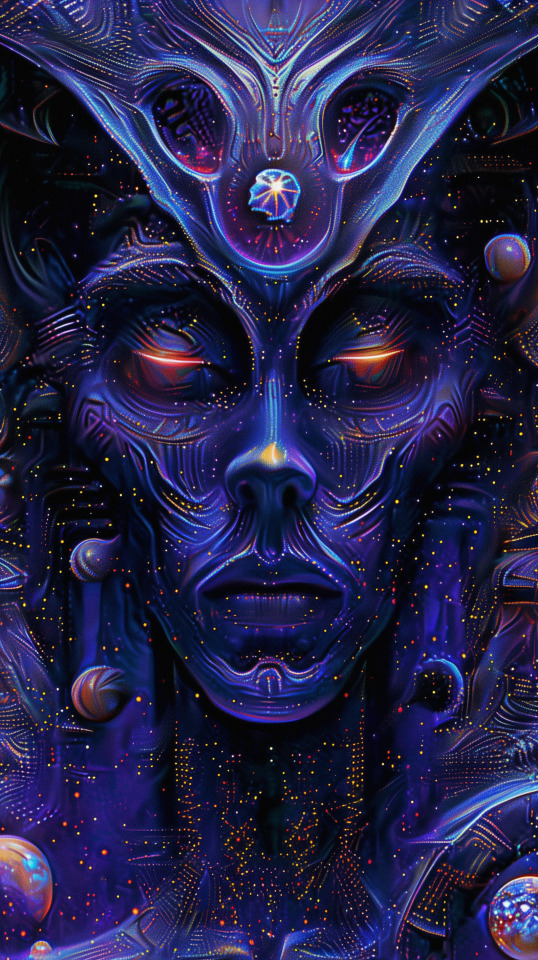
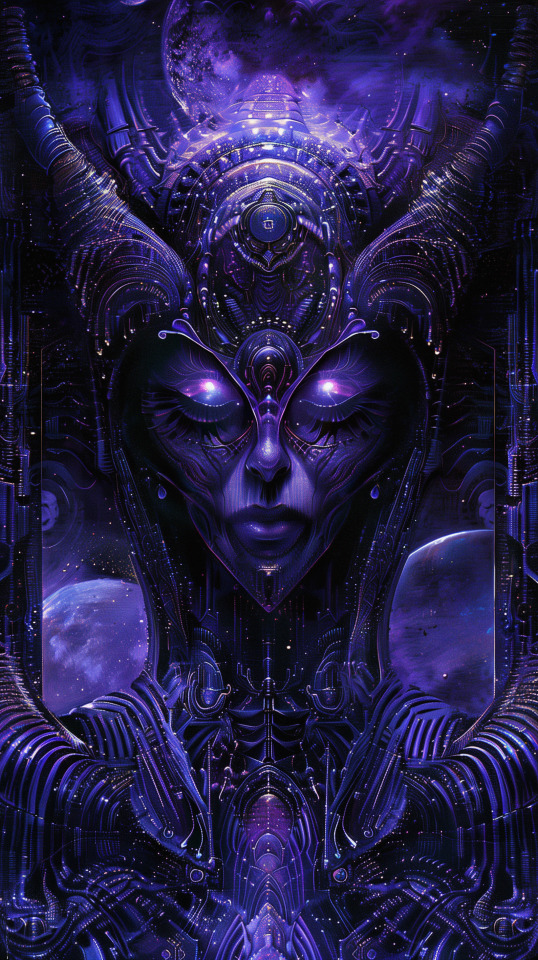
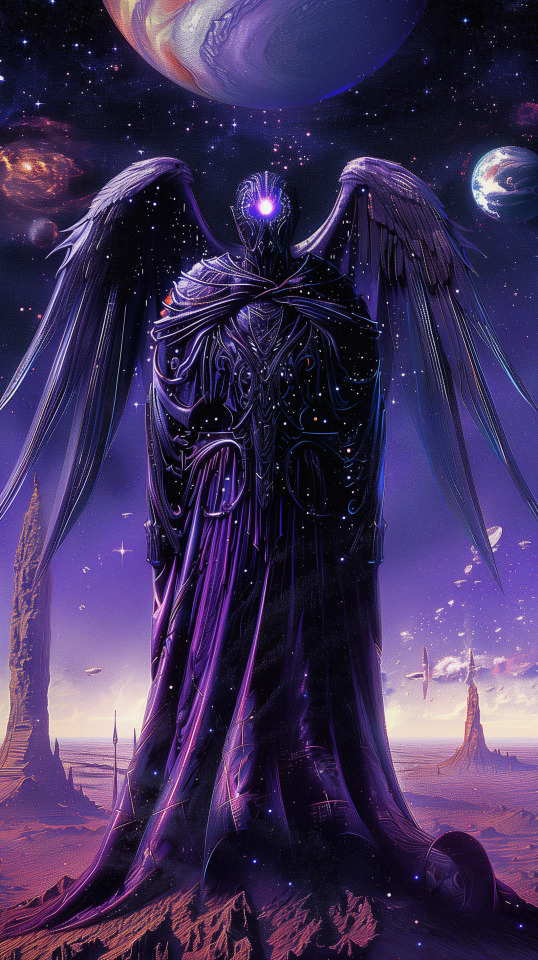
Zadakiel, Archangel of Jupiter ♃ Talon Abraxas
Zadkiel, the Archangel of Jupiter, is one you may not have heard of before. Unlike Michael or Gabriel, his images don't often adorn the walls of art museums or stained glass windows. But among all the Planetary Angels, his name gives the most suggestive evidence that there's a long tradition linking angels and planets.
In Hebrew, the name for the planet Jupiter is "Zedek," which translates as "righteousness." Righteousness conveys the sense that one has been "justified by God" -- something that has integrity, is true, or in alignment with the cosmic pattern. One who is righteous can see clearly, and is therefore able to act with justice and mercy, as well as to reveal the truth or prophesy. These happen to be some of the oldest associations with the astrological Jupiter.
Angel names often end with the suffix -el, which simply means "of God." There's a tradition of appending -el to other terms to signify the angel associated with the word. Consequently, in Hebrew the angel of righteousness, or the angel of Jupiter, would be called "Zedek-iel"
Zedekiel, or Zadkiel, or one of its various spellings, is found mentioned in some of the earliest references to angels. The earliest Christian compilation of the seven archangels, written in the 5th Century by Pseudo-Dionysius in his Celestial Hierarchy, incudes Zadkiel among their number, as does Pope Gregory's list from the 6th century (spelled either Sachiel or Zachariel.) In his 12th-century writings, the great Spanish-Arabic scholar and scientist Averroës (Ibn Rushd) named Zadkiel/Sachiel the archangel of Jupiter, a tradition that was copied by authors in later Medieval and Renaissance magic and angelology.
As an angel of mercy, some Talmudic texts claim that Zadkiel is the unnamed angel who stays Abraham's hand, preventing him from sacrificing his son Issaac. (Because of this Zadkiel is sometimes shown holding a dagger.)
Given his association with Jupiter, it's not uncommon for New Age authors to associate Sachiel with rituals of abundance and prosperity. The modern astrological sense of Jupiter is a bit like the planetary Santa Claus, the jolly generous giver of gifts. That's not too far off, if you remember that Santa "knows when you are naughty or nice," and gave gifts accordingly.
The Archangel Zadkiel brings abundance and prosperity when we are acting with justice, fairness, and generosity ourselves. He teaches that when we are in right relationship with the cosmic order, our needs will be met. Or, if we have a need or a lack, as the Archangel of mercy, Zadkiel will aid in our efforts to obtain what we seek when we ask for his assistance. Zadkiel also brings us luck, when we are doing our best, and forgiveness, when we've fallen short of the mark, in order to start again.
As the Archangel of Jupiter, an auspicious time to make request to aid from Zadkiel is Thursday, Jupiter's day.
25 notes
·
View notes
Note
Something interesting that korean fantasy novels and webcomics with a medieval inspired fantasy often do to justify the importance of Swords is that they make it so people who are good enough at using swords unlock wuxia superpowers. And it's explicitly just copying wuxia tropes involving qi and martial arts but applying them to pseudo-medieval knights. And the magic that mages use is for some reason completely unrelated to the magical abilities of these martial artists knights have
I'm not really an expert on how *magic* works in Eastern fantasy but I do find the concept of qi and the idea of magic coming from the cultivation of oneself/the body a very interesting idea. From my limited understanding it's also a major theme in Buddhist and Hindu mysticism too.
I would love to see a truly hybrid exploration of these concepts. I'm sure there are examples.
I really should play Amazing Cultivation Simulator once again, it's hard to get but it's extremely cool.
19 notes
·
View notes